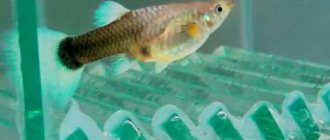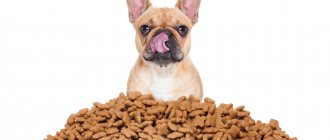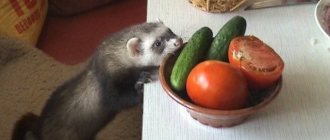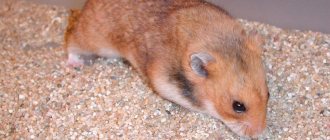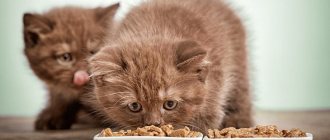Often when breeding crayfish, the question arises as to what crustaceans eat. Feeding crayfish is a responsible process that requires a serious approach. After all, their immunity, taste and further development depend on what arthropods eat. You cannot feed crayfish with any food. The article covers all the points related to feeding crayfish.
Features of feeding
As for feeding crayfish kept in an aquarium, swimming pool or specially created pond, it is important to know some rules and features:
- It is recommended to feed arthropods in the evening. Under natural conditions, individuals go in search of food when it gets dark.
- During the periods of reproduction and molting, crayfish eat in larger quantities, because their body begins to expend energy much faster.
- With improper or unbalanced nutrition, crayfish are prone to cannibalism, especially during the molting period. The place where crayfish are kept should be free and spacious, with several shelters.
- The daily diet of young crayfish is much higher than that of adults.
- Crayfish are able to leave their habitat in search of food. It is necessary to create conditions in which arthropods cannot escape.
- There are different diets for females and males. A rachikha (female) can consume food once every three days, while a crayfish requires food once every two days.
- After molting, you should not remove the remaining shell - later the cancer will eat it, because it is rich in a large amount of calcium, which contributes to the rapid recovery of the body.
Crayfish that eat properly and balanced grow intensively and are less likely to try to get out of their habitat.
How to feed crayfish correctly
The process of feeding arthropods is carried out in compliance with the following rules:
- Feeders should be laid in the evening;
- adhere to the daily feed intake, which directly depends on the live weight of the wards;
- during the period of cuticle shedding or reproduction, the amount of food is increased for rapid recovery after high energy expenditure;
- if there is not enough food, the crayfish begin to attack each other;
- when arranging an aquarium or pond, you need to provide places for shelter;
- the daily diet of young animals exceeds the norm for adults;
- The diet for individuals of different sexes is set individually (females are fed 1 day every 3 days, males - 1 day every 2 days);
- the shed cuticle is not removed; arthropods eat it to enrich the body with valuable calcium.
Types of feed
Crayfish are absolutely omnivorous creatures. They are fed both plant and meat foods. In nature, they spend most of their time in shallow waters in search of food, where they feed on a variety of mollusks, small fish, tadpoles, worms, and insects. Among plant foods, crayfish prefer water lilies, elodea, and pondweed. The total share of plant foods in the diet of arthropods is up to 90%.
Preparing feed yourself
Homemade food for crayfish should be similar to the food they are used to consuming in their natural environment. Replacement of animal food is bloodworms, pieces of squid, fish, shrimp or lean meat.
When preparing a diet for crayfish, crayfish should receive food of animal origin no more than twice a week. Many crayfish breeders claim that meat feed provokes the aggressive state of arthropods.
From plant foods, crayfish are fed the following products:
- zucchini;
- lettuce leaves;
- cucumbers;
- Chinese cabbage;
- spinach;
- carrots (contains keratin, which significantly enhances the color of crayfish);
- hornwort (the plant should be located in the habitat of crayfish).
When planting plants in an aquarium or a created pond, you must be extremely careful, because very often they are treated with insecticides, which can cause mass death of arthropods.
Industrially produced feed
Industrially produced food is available in granular form in various sizes, in the form of flakes or sticks.
Whichever option is preferred, the food must meet the following criteria:
- do not pollute the water in the pond;
- provide balanced nutrition;
- maintain the natural color of the shell;
- facilitate the process of changing the shell.
Specialized stores can offer types of food that are intended for special periods of life of crustaceans. For example, specialists often use feed designed to stimulate reproduction processes or strengthen the immune system of young animals.
Useful tips
Beginning businessmen who are planning to set up a farm for breeding crayfish are advised to take into account the advice of experienced breeders.
- When drawing up expenses for the year, you need to know that in the summer, crayfish need more food.
- If a tank with arthropods is installed outside, crayfish feeding stops from mid-autumn to spring.
- When growing in a pond, you need to periodically pay attention to cleaning the reservoir from turbidity. Turbid water provokes disease and extinction of inhabitants.
- The speed of weight gain and reproduction of the wards depends on the correct development of the diet.
- From the behavior of the crayfish, it becomes noticeable that negative changes are occurring in the water. Arthropods are inhabitants of clean water bodies.
- The water temperature, favorable for the intensive development of young animals and the reproduction process, should correspond to 15°.
The cost of maintaining a farm is significantly reduced with proper organization of the habitat and selection of balanced feeding.
Noticed a mistake? Select it and press Ctrl Enter to let us know.
Feeding the young
Young animals are fed differently than adult crayfish. Young individuals are fed with small daphnia, food for fish fry, vinegar nematode, crushed tubifex, and brine shrimp.
When feeding small daphnia to crayfish, it is first recommended to scald it with boiling water, because when alive it is very mobile, which will make it difficult for small crayfish to catch it.
Young crayfish need more food than adults. For these reasons, they search for food day and night. They feed on detritus - a product of the natural decay of various organic matter. For example, in an aquarium whose water is constantly filtered, there is very little detritus.
To replace it, fallen leaves of trees are often used. It is better to give preference to dry leaves of oak, alder and beech - they will be an excellent source of valuable food, which not only promotes the development of their digestive system, but will also help get rid of parasites. Crayfish eat leaves in an aquarium very quickly; they need to be added regularly.
It is prohibited to use freshly picked leaves to add to the aquarium - they have the ability to release toxins into the water.
Is it possible to keep crayfish in an aquarium?
Crayfish can be safely kept in an aquarium, but you just need to know that they usually do not live long and there should be no fish or plants in the aquarium. The common crayfish is quite large and agile; it catches and eats fish well. If plants are planted in the aquarium, then it will definitely fly through them.
Crayfish do not live long in aquarium conditions because they are cold-water species. In our latitudes, warm water occurs only in the summer, and even then, at the bottom it is quite cool. The water in the aquarium is slightly warmer than it needs. In a word, our crayfish can be kept in an aquarium, but only separately from fish and without plants, and at the same time think about how to make sure that in the summer heat the water temperature does not rise too high.
Feeding adult crayfish
Adults prefer minced meat from warm-blooded animals and fish, frogs and tadpoles. Before the molting period, it is advisable to feed crustaceans with crushed small mollusks, strongly crushing the bivalve shells.
They use kitchen waste for feeding, giving the arthropods meat trimmings, vegetable peels, bread scraps, etc. If the waste is not completely fresh, it is pre-boiled.
Heavily decomposed food should not be used for feeding, as this can cause a massive disease of crayfish.
Boiled grains, especially round ones (corn, peas), need to be mashed before giving to the crayfish, otherwise it will be difficult for him to grab them with his claws. The food is laid out in the dark in small places. They give food in such a way that it is completely eaten. It is important to establish control over the consumption of food by running a net along the bottom. Crayfish in reservoirs are fed sparingly, especially if they are fed animal food.
If there is leftover food, the owner needs to reduce the amount or not feed the crayfish at all for some time. When food remains rot, the water becomes polluted, causing arthropods to suffer from various diseases that lead to their death.
Feeding begins in April with a diet of 0.5% of the live weight of the crayfish, increasing in warm times after molting and during the period of intensive growth, so that the amount of food is 2-2.5% of the live weight. During the molting period, they stop feeding the crayfish for several days. When it gets cold, arthropods are not fed or food continues to be given in dense plantings at reduced rates. In winter, feeding crayfish should be careful: during this period the nutritional requirement is small, but they need to be fed periodically.
A properly formulated diet will ensure good health for arthropods. It is important to take a responsible approach to feeding crayfish. It is unacceptable to use the first available products or feed of questionable quality to feed crayfish.
Feeders for crayfish
Crayfish are absolutely omnivorous creatures. They are fed both plant and meat foods. In nature, they spend most of their time in shallow waters in search of food, where they feed on a variety of mollusks, small fish, tadpoles, worms, and insects. Among plant foods, crayfish prefer water lilies, elodea, and pondweed. The total share of plant foods in the diet of arthropods is up to 90%.
Homemade food for crayfish should be similar to the food they are used to consuming in their natural environment. Replacement of animal food is bloodworms, pieces of squid, fish, shrimp or lean meat.
From plant foods, crayfish are fed the following products:
- zucchini;
- lettuce leaves;
- cucumbers;
- Chinese cabbage;
- spinach;
- carrots (contains keratin, which significantly enhances the color of crayfish);
- hornwort (the plant should be located in the habitat of crayfish).
Industrially produced food is available in granular form in various sizes, in the form of flakes or sticks.
Whichever option is preferred, the food must meet the following criteria:
- do not pollute the water in the pond;
- provide balanced nutrition;
- maintain the natural color of the shell;
- facilitate the process of changing the shell.
Specialized stores can offer types of food that are intended for special periods of life of crustaceans. For example, specialists often use feed designed to stimulate reproduction processes or strengthen the immune system of young animals.
Young animals are fed differently than adult crayfish. Young individuals are fed with small daphnia, food for fish fry, vinegar nematode, crushed tubifex, and brine shrimp.
Young crayfish need more food than adults. For these reasons, they search for food day and night. They feed on detritus - a product of the natural decay of various organic matter. For example, in an aquarium whose water is constantly filtered, there is very little detritus.
To replace it, fallen leaves of trees are often used. It is better to give preference to dry leaves of oak, alder and beech - they will be an excellent source of valuable food, which not only promotes the development of their digestive system, but will also help get rid of parasites. Crayfish eat leaves in an aquarium very quickly; they need to be added regularly.
It is prohibited to use freshly picked leaves to add to the aquarium - they have the ability to release toxins into the water.
Adults prefer minced meat from warm-blooded animals and fish, frogs and tadpoles. Before the molting period, it is advisable to feed crustaceans with crushed small mollusks, strongly crushing the bivalve shells.
They use kitchen waste for feeding, giving the arthropods meat trimmings, vegetable peels, bread scraps, etc. If the waste is not completely fresh, it is pre-boiled.
Boiled grains, especially round ones (corn, peas), need to be mashed before giving to the crayfish, otherwise it will be difficult for him to grab them with his claws. The food is laid out in the dark in small places. They give food in such a way that it is completely eaten. It is important to establish control over the consumption of food by running a net along the bottom. Crayfish in reservoirs are fed sparingly, especially if they are fed animal food.
If there is leftover food, the owner needs to reduce the amount or not feed the crayfish at all for some time. When food remains rot, the water becomes polluted, causing arthropods to suffer from various diseases that lead to their death.
Feeding begins in April with a diet of 0.5% of the live weight of the crayfish, increasing in warm times after molting and during the period of intensive growth, so that the amount of food is 2-2.5% of the live weight. During the molting period, they stop feeding the crayfish for several days. When it gets cold, arthropods are not fed or food continues to be given in dense plantings at reduced rates. In winter, feeding crayfish should be careful: during this period the nutritional requirement is small, but they need to be fed periodically.
A properly formulated diet will ensure good health for arthropods. It is important to take a responsible approach to feeding crayfish. It is unacceptable to use the first available products or feed of questionable quality to feed crayfish.
Various feeders are used to feed aquarium crayfish. There are a wide variety of options available for sale. But most often feeders are made on their own.
The simplest feeder for crayfish is a small fixed platform, which is made from any non-toxic plastic. Aquarium stores offer feeders that attract attention with their leaf-shaped shape and many other options.
In nature, crayfish mainly feed on plant foods. What to feed cancer? In the aquarium they eat sinking pellets, tablets, flakes and special food for crayfish and shrimp. It is also worth buying crayfish food with a high calcium content.
We suggest you read: How to treat kidney disease in cats and dogs
Such food helps them quickly restore their chitinous cover after molting. Additionally, they need to be fed vegetables - spinach, zucchini, cucumbers. If you have a planted aquarium, you can feed excess plants.
In addition to vegetables, they also eat protein foods, but they should be given no more than once a week. This could be a piece of fish fillet or shrimp, frozen live food. Aquarists believe that feeding crayfish with protein foods significantly increases their aggressiveness.
You need to feed the crayfish in the aquarium once a day, but if we are talking about vegetables, a piece of cucumber, for example, then you can leave it for the entire time until the crayfish eat it.
Biomax feed
Diet during molting period
Molting is common for crayfish. Crustaceans grow throughout their entire life; due to the chitinous cover, this is not possible, because it is hard. Cancer needs it to be reset regularly. During molting, arthropods lose their activity and spend most of their time in shelter. If, instead of cancer, only its shell was seen, do not be alarmed, this is a natural process.
The chitinous cover is not removed - the cancer will eat it. After molting, young crayfish require a lot of calcium, which contributes to the rapid restoration of a new coating. In the first stages of their life, arthropods molt 5-6 times. After a few years, molting occurs several times throughout the year. The process itself lasts only 2-3 minutes. The new cover is completely restored in 1-1.5 weeks.
Before molting, it is necessary to increase the volume or frequency of feeding by approximately 4 times. It is allowed to feed crayfish with specialized food.
It is recommended to feed the following foods:
- pasta;
- shrimps;
- carrot;
- fish;
- porridge;
- worms;
- snails;
- meat;
- bloodworm;
- tubifex;
- coretra;
- Daphnia;
- gammarus.
Arthropods will also like a diet consisting of cabbage, lettuce, peas, parsley, zucchini, nettles, spinach, frozen vegetables, tree leaves, and even dry food for aquarium fish.
Features of feeding crayfish at home
The diet of river crustaceans in nature and when kept in an artificial environment are noticeably different. Aquarists need to know what and how to feed their pets in order to protect them from a number of diseases and rapid death.
Crayfish are omnivores, so problems with choosing food, as a rule, do not arise. Your pet's diet can include:
- bread crumbs;
- chopped pieces of meat of any kind;
- cereals;
- various cereals;
- pieces of fresh vegetables and fruits;
- greenery;
- nettle;
- earthworms.
In addition, you can purchase specialized food designed specifically for crustaceans, which are sold at any pet store.
The types of frozen or live food that are used to feed ornamental fish are ideal for crayfish, for example:
- small shellfish;
- cyclops;
- daphnia;
- rotifer.
Protein food is also necessary for crustaceans, but the basis of their diet should still be plant foods.
The most important thing is to monitor the portions of the food offered.
Experts recommend feeding food in a volume not exceeding 3% of the crayfish’s body weight.
Otherwise, the remains of uneaten food begin to rot and decompose, which leads to the death of arthropods.
How to feed crayfish when catching them?
Bait for catching crayfish is selected based on the season of the year. Vegetable complementary foods are effective in spring and summer. In autumn and early winter, animal food is used to feed arthropods. For this use:
- meat trimmings;
- fish;
- entrails of fish and poultry;
- shellfish;
- worms;
- snails;
- frogs;
- meat.
The fish is served fresh or slightly spoiled. To enhance the smell, it is dried a little in the sun. Cancers like roach, crucian carp and bream. For meat products, it is advisable to use poultry or meat carcass. It is also served stale. Clams, snails and frogs are caught in the same body of water where they are going to catch crayfish. Worms are used extremely rarely in the absence of other options: they are placed in a piece of thin gauze, preventing them from spreading.
Of the vegetable baits, it is most effective to use corn, dill, peas, black bread, macadamia, and garlic. Peas and corn are boiled, steamed or purchased canned. Crustaceans are attracted to the garlic aroma, which is why it is recommended to add it to other products.
When choosing bait, take into account the time of year:
| Season | What to feed? |
| Summer | They are fed with a piece of liver, meat, and chicken giblets. To enhance the smell, fish oil is added. |
| Spring | They use vegetable bait or fish, which are first cut along the ridge, turned inside out and left in the sun to spoil. |
| Winter and autumn | It is recommended to use rancid meat or peas. |
The habitat is also very important. For hunting in reservoirs with muddy bottoms, it is advisable to use bait made from spoiled fish. It is a common food for crayfish that live in such conditions. Arthropods will crawl into the “trap” without suspecting anything. If there is a lot of vegetation at the bottom, using peas or corn is more effective.
For fishing in underwater caves or under the shore, bait with a strong smell of garlic or spoiled meat is used. In shallow water, experts advise using worms, shellfish, and corn for bait.
What does cancer eat in its natural environment?
Cancers have an excellent sense of smell. Under natural conditions, they are able to find rotten fish faster than fresh fish, because it has a distinct odor as it decomposes. In rivers, fighting crayfish are more common, fighting over an old fish carcass.
Their vision is no less well developed. Seeing something red, crayfish will definitely want to try it, considering the object a piece of meat.
Crayfish tend to eat algae rich in lime. They need it for healthy shell growth; they especially need lime during the molting period when shedding the old “armor” and growing a new one.
Crayfish need the following algae:
- elodea;
- Characeae plant species;
- hornwort.
Only crayfish feed on these plants, because they contain lime, which gives the arthropods rigidity, which they do not disdain. This is important to take into account when feeding crayfish at home - it is advisable to increase the amount of lime in the crayfish food.
In addition to plants, they feed on a variety of aquatic life, various types of invertebrates, for example, daphnia or cyclops. They also feed on larvae, tadpoles, snails, and worms.
It is recommended to breed phyto- and zooplankton in the reservoir. Crayfish have a positive attitude towards such a neighborhood. These species serve as food not only for crayfish, but also for their prey.
Feeding crayfish is a responsible task, because the weight of the arthropod and further profit from their sale depend on proper nutrition and diet planning. If you follow the feeding rules, you will be able to speed up the process of growth and reproduction and keep active crayfish.
0
0
Copy link
Growing in an aquarium
Keeping arthropods in an apartment has its advantages - for example, the ability to control the life of pets, strictly adhere to the temperature regime and minimize wintering time. However, it should be taken into account that if the rules of care are not followed, the water in the aquarium quickly deteriorates. To avoid this, it is necessary to feed crayfish at home from special square trays equipped with sides, promptly removing uneaten food debris.
When breeding crayfish in an aquarium, you must follow the rules for feeding them.
The diet of the inhabitants of the aquarium will depend on their age:
- Fingerlings and young animals can be fed with fish or minced meat, boiled vegetables and feed for herbivorous fish. To speed up development, a variety of supplements are added to the main food. It is important to avoid fatty foods, which deteriorate water quality and cause mass mortality of individuals.
- Suitable foods for adult crayfish include soaked cereals, pieces of bread and vegetables, worms, shrimp pellets, snails, bloodworms and young frogs. It is useful to add alder, potato and nettle leaves to food. Occasionally you can give spoiled meat and stale fish, while carefully monitoring the purity of the water.
The amount of food required by each individual is 2−4% of its weight. If it is difficult to calculate, you need to follow a simple rule: it is better to underfeed than to leave extra pieces of food (especially fish and meat) in the aquarium.
Decaying food residues contribute to the proliferation of pathogens, which subsequently lead to a crayfish pestilence.
